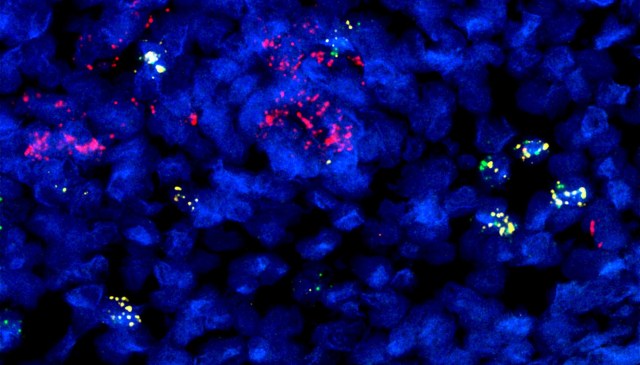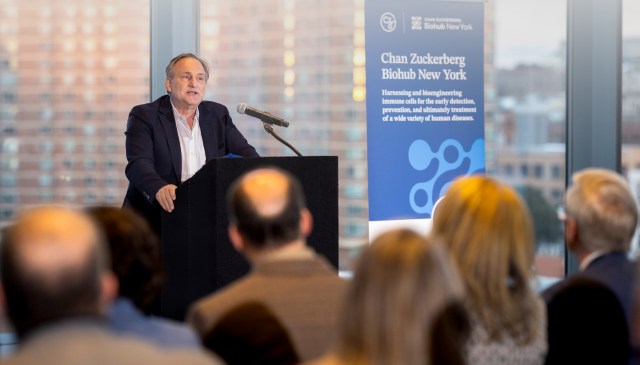May 26, 2021 · 7 min read
STAT: Use Single-Cell Biology to Shed Light on Pediatric Diseases Currently in the Dark
By Priscilla Chan
This piece was published in STAT on May 24, 2021.
There are few things harder for a physician to say to a patient than “I don’t know what’s wrong.” Saying that is even harder when you’re sitting across from the parent of a child with an undiagnosed condition.
And as I learned from experience, it is harder still when you work at a national referral center for rare pediatric diseases, since you are a family’s last hope: the physician they’re seeing after they’ve spent months — even years — searching for help and exhausting every other option. My heart broke every time I had to say, “I’m so sorry, but I don’t know what’s wrong.”
Of course, even after making that revelation, my colleagues and I at the University of California, San Francisco, scoured patients’ histories and medical data to find the origins of their diseases. We pored over every scrap of research that might help us understand the cellular mechanisms at play. And we listened to — and learned from — our patients and their families.
Listen to CZI Co-CEO Priscilla Chan on STAT’s First Opinion podcast, where she shares her experiences as a pediatrician and how we can advance pediatrics research.
For transcript, click here.
We solved some puzzles. More often, though, the pieces we needed were missing, and there was little we could do to address the underlying causes of our patients’ diseases.
That was the better part of a decade ago. Today, things are set to change, thanks to major advances in single-cell biology, the application of technologies and techniques that allow researchers to study the building blocks of life — single cells.
Over the past few years, researchers have been building reference maps for every cell type in adult human bodies. The rich data and resolution that single-cell technologies produce are already transforming our understanding of human biology. They could also reveal the cellular mechanisms for disease, including rare diseases, by identifying the activity of disease-associated genes in individual cells, as well gene activity in healthy individuals. For instance, researchers used single-cell RNA sequencing to identify a new cell type in the human airway that could help scientists develop new and improved therapies for cystic fibrosis.
Single-cell technology has also allowed scientists to quickly identify cell types in the nose that are susceptible to infection by SARS-CoV-2, the virus that causes Covid-19.
The problem is that this revolution in single-cell biology and medicine has yet to fully reach pediatrics. There’s no lack of energy or passion for single-cell research in this community. But a number of systemic barriers are preventing it from taking off.
One of those barriers is funding or, to be more precise, underfunding. As a percentage of the National Institutes of Health budget, support for pediatric research has declined steadily from 12.8% in 1998 to just 1.7% in 2015. Even though NIH support for pediatric research has increased since 2015, it is still not sufficient. Pay is another issue: Pediatricians earn less than almost any other type of physician, which leads many of them to work longer clinical hours and forgo research projects they might otherwise undertake.
The challenges don’t end there. Single-cell researchers who are able to secure funding also need tissue samples to study, not only from patients who are sick but also from those who are healthy. But both of these kinds of samples are in short supply. There isn’t always a clear reason for patients and their families to donate healthy tissue, such as tissue that’s been removed during an operation. And the process of contributing any sample can be especially fraught. Families may be concerned about privacy, or feel mistrust due to historical and discriminatory practices in medicine. Or they may be unaware that participation in research is even possible.
As formidable as the barriers to research are, leaders within the pediatric community have proven that they can be overcome. Take the Children’s Oncology Group, which brings together more than 10,000 experts across 200-plus children’s hospitals. Since its founding in 1955, this community has helped families feel confident and informed about participating in pediatric cancer research and contributing tissue samples for it. The group has worked directly with parents to implement effective privacy and consent standards. And it has helped establish a paradigm where data sharing between pediatric cancer research groups is the rule rather than the exception.
The results speak for themselves. As childhood cancer research has taken off, survival rates have soared from less than 10% in the 1950s to nearly 80% today. Put another way, hundreds of thousands of children who might otherwise have died have grown up to lead healthy, fulfilling lives.
Pediatrics has reached an inflection point, one in which single-cell biology can help decipher the origins of many childhood diseases.
With that in mind, the Chan Zuckerberg Initiative (CZI), the philanthropy I co-founded, is supporting this kind of collaboration. It aims to bring together patients, families, clinicians, and researchers to advance single-cell research and to eventually create and share an open-source reference map of all healthy pediatric tissues that scientists can access and analyze.
Several principles are guiding this approach. CZI is funding interdisciplinary teams of data scientists, experts in single-cell biology, and — this is key — pediatricians who continue to see patients. The goal is to ensure that each collaboration balances basic science research with clear practical applications and is informed by the needs of the families who have volunteered to provide samples.
These teams will contribute to open science projects, including the global Human Cell Atlas, which aims to map all of the cells in the human body to help scientists understand how healthy cells function and what goes wrong in disease. There are, of course, limits to the amount of data that can or should be shared across the pediatric research community. But as the Children’s Oncology Group has demonstrated, it is possible to maximize collaboration while honoring patient privacy — and to make extraordinary progress by doing so.
I and my CZI colleagues believe strongly that single-cell reference data must include people who have historically been underserved by past pediatric research initiatives, and suffer disproportionately from childhood disease, including Black, Latinx, Asian, and Indigenous populations. These children must be part of the hope and progress in front of us, so this research must be conducted with partners from these communities.
While single-cell biology research networks are still small, I hope they will grow as more patients, parents, clinicians, researchers, and institutions see where this research could lead. Imagine a future in which researchers have mapped a wide range of pediatric cell types and know how they develop over time. With that knowledge, a clinician could sequence a patient’s genome and predict when, where, and how a disease is likely to manifest itself. Understanding what the onset of disease looks like at the cellular level and being able to identify features that change before pathology sets in could even help us prevent disease rather than manage illness after the fact — a development that will benefit children and adults.
These advancements would be life-changing for patients and families. The therapeutic opportunities are even more promising. Armed with the right data on gene expression and cell types, scientists and pediatricians could develop highly targeted therapies for any number of disorders. We could identify new ways to deploy existing therapeutic strategies.
Of course, that future lies beyond the reach of any one research group, network, or organization. It will require sustained investment across a wide range of institutions, from patient networks to the federal government and philanthropic funders. And it will depend on cultivating a shared understanding of the value of pediatric research, and single-cell research in particular.
When I consider the work ahead, I am reminded of “Fiat lux” — Let there be light — the motto of UCSF. It should serve as a charge to the pediatric community: Let us shed new light on diseases that remain in the dark. And let us be the light for children who need it most.
Priscilla Chan is a pediatrician and co-founder and co-CEO of the Chan Zuckerberg Initiative.





